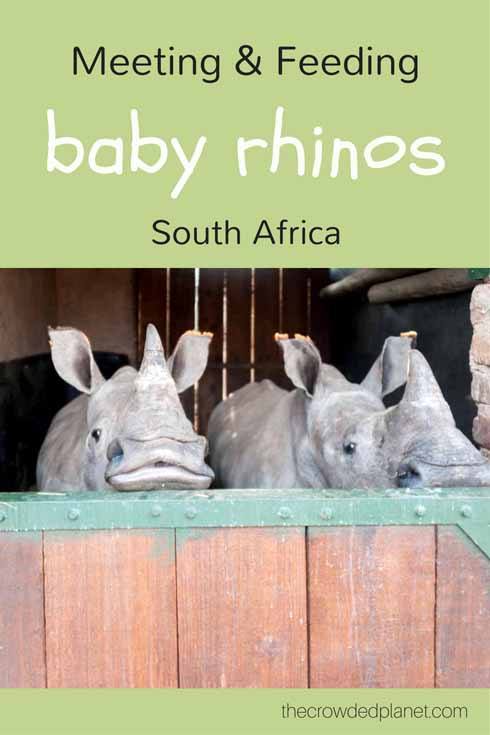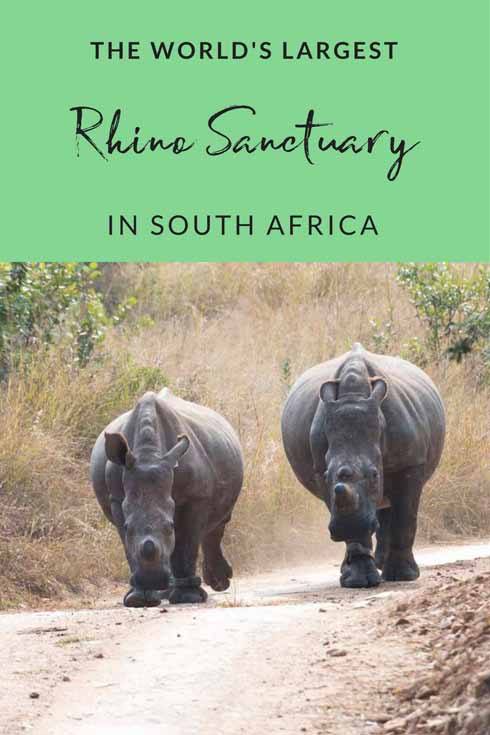After our week-long South African safari, we kept exploring the Greater Kruger region to visit the world’s largest rhino sanctuary, learn more about rhinos and fight against poaching that some brave souls are undertaking in this corner of Africa.
Would you like to know more about nature in South Africa? Take a look at our 10 best hikes in Cape Town post!
All we could see was a ruffle of leaves, and then they were gone. We stopped, wondering what had created that movement in the bush – maybe a herd of impala, or elephants, or a pride of lions? – then we saw. It was two young men in military fatigues, barely visible in the thick bush of the Greater Kruger region.
Are they army? We asked our guide Conraad.
No, he replied. They’re anti-poaching patrol. They spend days on end in the bush, protecting rhinos and other animals from illegal hunting. I have tremendous respect for them – they’re the real heroes of the bush.
Conraad was one of the owners of Rukiya, an eco-lodge in the Greater Kruger region and the base camp during our volunteer vacation in South Africa with Discover Corps. We spent a total of 7 days at Rukiya, alternating our time between game drives, working with NGOs operating in the region and learning about history, culture and conservation in South Africa.
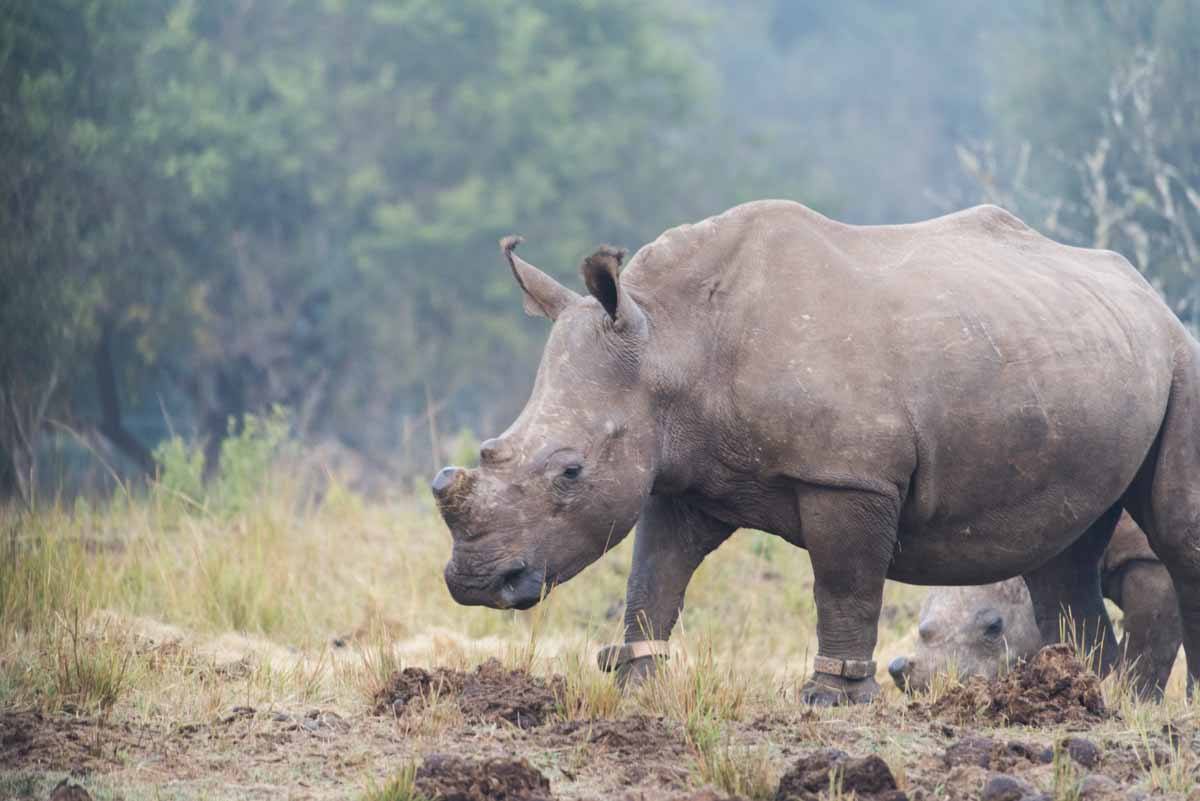
Learning about Rhino Poaching and Conservation Status
Two days before we spotted the anti-poaching patrol on our way to a morning game drive, Conraad had given us a presentation highlighting the plight of rhinos. ‘Rhinos may well be extinct in the next twenty years, unless we do something to fight the poaching epidemic’ Conraad began.
The presentation included a series of VERY graphic pictures – mama rhinos with their face hacked to pieces by machetes, their babies trying to nurse from the dead mother’s body. Rhinos suffering from horrific wounds that will no doubt kill them. Disembowelled rhinos, babies being eaten alive by hyenas after their mothers fell to poachers, rhinos lying in pools of blood.

[Related – Tips for Madagascar Independent Travel]
Then, Conraad went on showing us slide after slide, painting a seriously bleak picture of the future of rhinos in South Africa. Rhino poaching spread like wildfire, moving southwards throughout the last century. Rhinos were poached to extinction in West and Central Africa, then the poaching epidemic spread to East and Southern Africa, where the rhino population is going through a desperate last stand.
The Western Black Rhino, a black rhino subspecies once frequent throughout Nigeria, Sudan, Chad, Niger and Cameroon, was declared extinct last year, while the Northern White Rhino is teetering on the brink of extinction, with only three individuals remaining. Yes, three.
Conraad went on showing us graphs that all seemed to have one thing in common – an exponential increase, year after year, of rhino poaching numbers – from 13 in 2007 to 668 in 2012, and an all-time high of 1215 in 2014. It is currently estimated that one rhino is poached every 8 hours in South Africa.

And all for what?
For a lie.
[Related –Our Southern Africa Itinerary]
Myths and Lies About Rhino Horn
Rhinos are being murdered for their horn. For centuries, Eastern medicines have touted rhino horn as a kind of panacea for all sorts of ailments – including gout, rheumatisms, arthritis, fever, food poisoning and even cancer and hangovers. Nature quotes that ‘according to the 16th century Chinese pharmacist Li Shi Chen, the horn could also cure snakebites, hallucinations, typhoid, headaches, carbuncles, vomiting, food poisoning, and devil possession.’
Carved rhino horns are also used in Yemen as the handles of jambiya, traditional daggers that are presented to young boys on their twelfth birthday. The trade of rhino horn has been banned in Yemen since 1982, but naturally, this has done nothing but raise its value.
The bulk of rhino horns is being illegally smuggled into Asia for purported ‘medicinal’ use, and ever-increasing demand is driving prices sky-high. Rhino horn is being valued in excess of $100,000 a kilo – more than gold, more than cocaine.
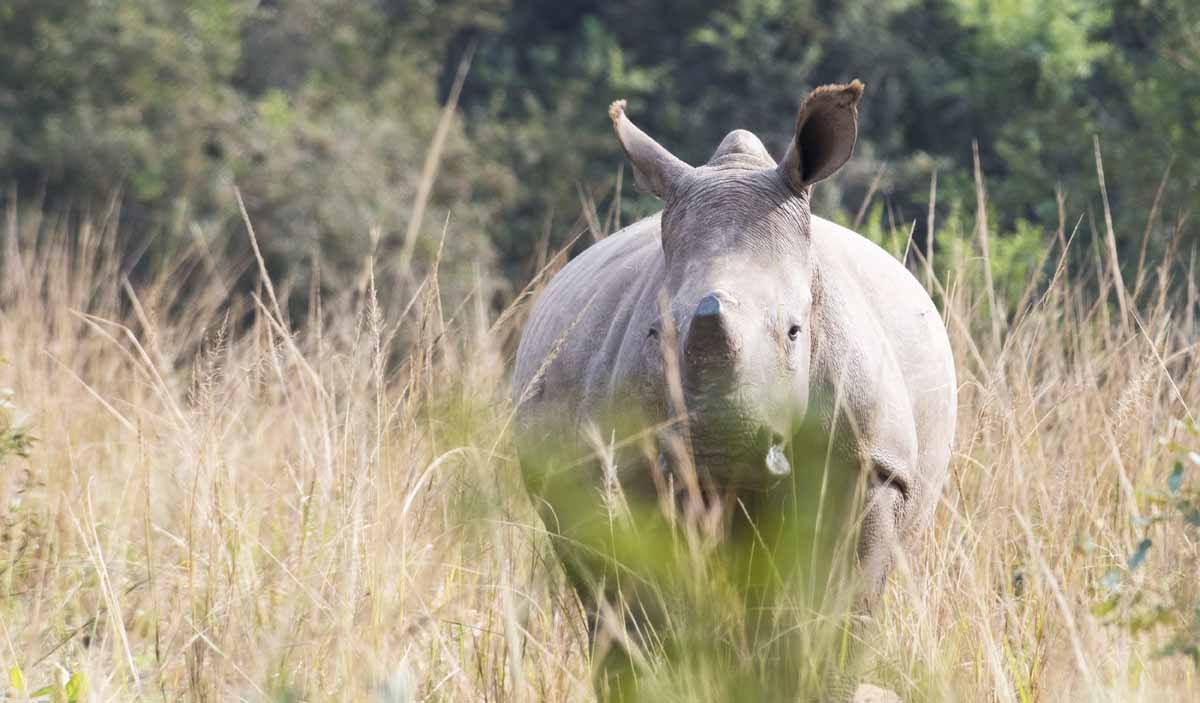
Needless to say, there is no scientific evidence that rhino horn is actually good to treat anything. Horns are made of keratin, the same material as our hair or fingernails, and they have a similar consistency to horses’ hooves.
The belief that rhino horn is a miraculous cure for cancer is particularly strong in Vietnam, with horn chunks and powders being smuggled on the streets of Hanoi for prices reaching $3500 for 100 grams. In the mid-2000s, the rumour that rhino horn cured a leading Vietnamese politician from cancer killed off Vietnam’s last Javan rhinos, and brought the three Indonesian rhino species dangerously close to extinction.
[Related – 19 Reasons to go Overlanding in Namibia]
Vietnam is a fast-developing country with a booming middle class, but access to quality medical care for cancer patients is close to non-existent, leading several rich Vietnamese to turn to ‘traditional remedies’ like rhino horn – even if that means shelling out thousands for something akin to a bag of fingernails.
Meanwhile, rhinos are dying. The legislation of several countries, including South Africa, makes it very hard to successfully prosecute poachers. The combination of impunity, rampant poverty and high demand has created a true apocalypse for rhinos – and if the current trend continues, they will be extinct over the next twenty years, confined to the history books just like the dodo and the Tasmanian tiger.
Visiting Care for Wild Africa, the Largest Rhino Sanctuary in the World
Yet, there is a glimmer of hope for the future of rhinos. A few days later we found ourselves driving in darkness, in the early hours of the morning. All we had were some coordinates, and we followed the blue dot on our GPS like a beacon leading us to a place that may very well be one of the last safe havens for rhinos. A place where a bunch of brave souls are tirelessly working, to protect this species from the poaching epidemic.
We were headed to Care for Wild Africa, the world’s largest rhino sanctuary and orphanage, housing rhinos rescued from poachers.

The deeper we travelled into the mountains surrounding Kruger National Park, the worse the roads got. The rhino sanctuary’s location is secret – there are no signs pointing to it, nothing but the GPS coordinates and some very vague directions.
The aims of Care for Wild Africa can be summarized with three words – rescue, rehabilitate, release. Rhinos normally have just one calf, and the bond between mother and baby is very strong – babies spend all their time with their mum, and nurse until two years of age. When rhino mothers are killed for their horns, the babies are often spared, as their horn is still underdeveloped. For this reason, rhino babies – often having suffered horrific wounds – are often left lying on the side of their dying or dead mother, as we saw in the pictures Conraad showed us a few days previously during his presentation.
Sometimes, the rhino babies stay with their dead mother for days, until they are rescued or die from exhaustion, starvation or predators. This was probably going to be Wyntir’s fate, a rhino calf rescued in 2014 and found with her ears chewed off by hyenas.

Three years later, Wyntir was thriving, and we spotted her grazing during a game drive around the reserve, in the company of her best friends Tana and Mabush. Because of her mutilation, Wyntir’s hearing is very poor, but her friends have become her new ‘ears’, guiding her across the bush and reading her body language when needed.
[Related – 7 Day Trips from Cape Town]
At their arrival, rhino orphans are kept in pens and they are fed several times a day a mixture of artificial milk and other nutrients, depending on the needs of the individual baby. Volunteers work round the clock, as rhinos have to be fed every few hours. During our visit, we were lucky to be able to feed four rhinos ourselves – the one I fed, Zac, had been rescued a year before in Kruger, after his mum was killed.
Baby Zac gulped down his 2-liter bottle in about ten seconds flat. I would have loved to stay and cuddle him, but the guidelines at Care for Wild Africa are very strict – contact with humans during feeding time is to be minimised, to facilitate reintroduction in the wild.
Rhino Volunteering and Rehabilitation
The rescued rhinos will not be returned to Kruger. At four million hectares, the park is too large to be monitored properly – and sending rhinos back there would be tantamount to sending them back to face death. The sanctuary reserve is currently 28,000 hectares, but there are plans to grow it further, with the aim of reintroducing hundreds of rhinos back into a secure place where they can roam free.
However, the rhinos will not be left alone. Care for Wild Africa employs dozens of security guards, patrolling the whole property and looking after each and every crash of rhinos round the clock. As we toured the reserve we saw the guards, half-hidden in the bush, taking care of these precious, rare creatures. We only saw them because they wanted us to see them – an instant later, and they were gone.
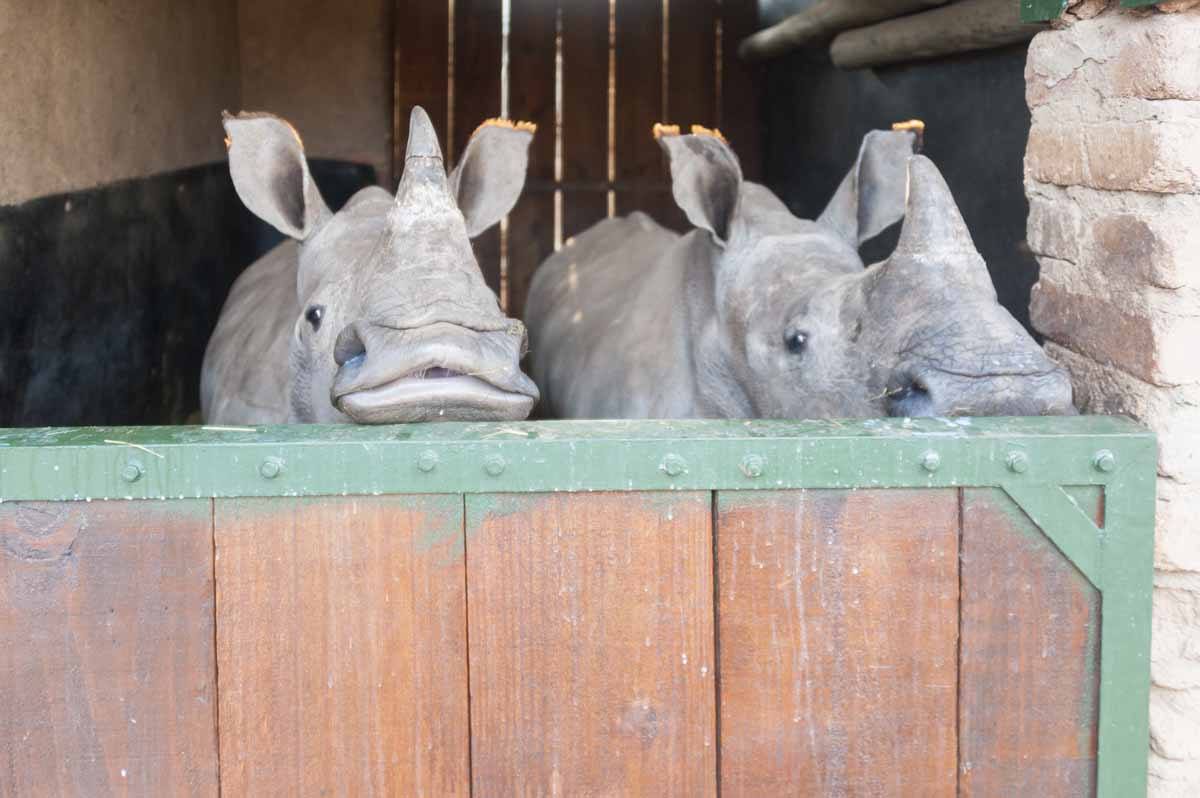
During our visit at Care for Wild Africa, we were lucky to meet co-founder Mark Cherry and his daughter Shannon, a formidable team working with all their heart and soul alongside their team of volunteers to ensure rhinos will indeed have a fighting chance. Mark gave us a presentation of the sanctuary’s project, and one sentence stuck with me. We need to save them. Every single one. For a lost rhino life is one step closer to extinction, one desperate cry of help that should resonate throughout the world.
Care for Wild Africa doesn’t just aim to save rhinos, but also as many orphaned and injured animals as they possibly can. The sanctuary also housed lions, hippos, tortoises, meerkats and even a serval kitten at the time of our visit, all receiving the best possible care. We left the sanctuary with our hearts full of positive feelings, that could all be summarised with two words – love and hope. Mark, Shannon and their team love nature, and have hope that the poaching tide could one day be overturned, and rhinos will gain freedom once again.
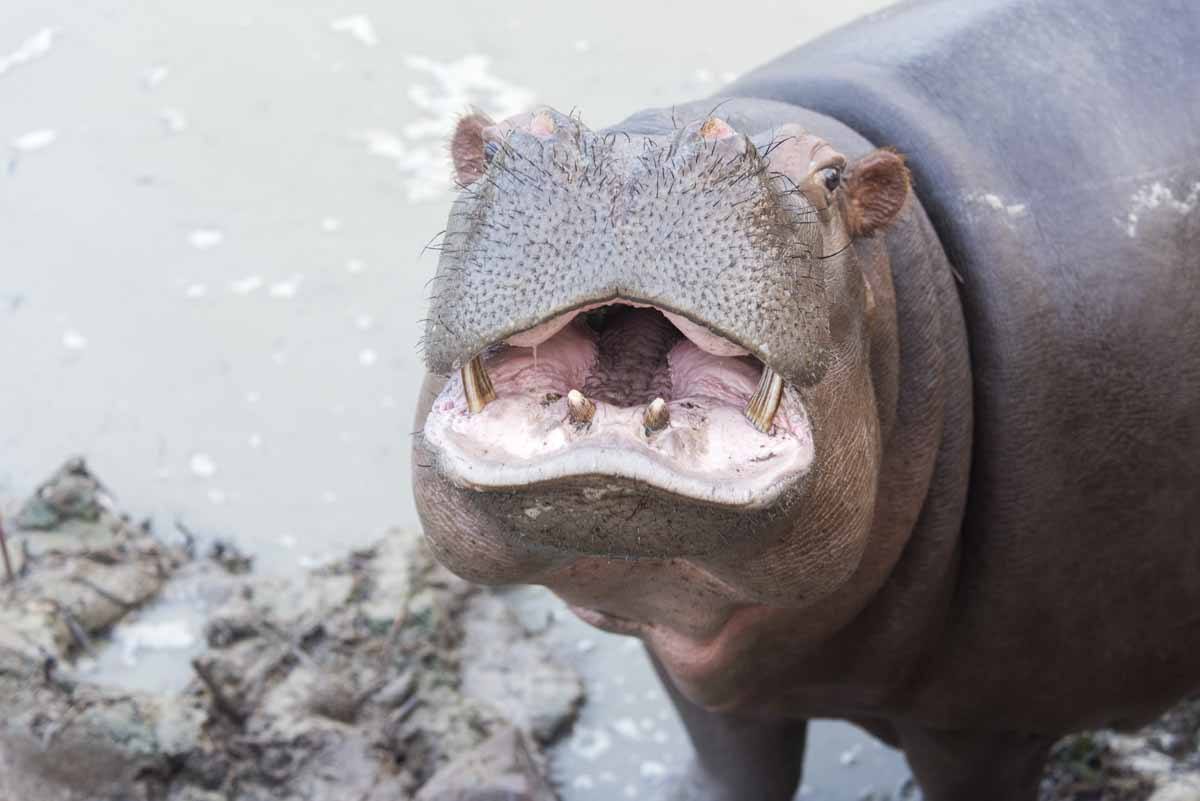

Fighting Rhino Poaching and Saving Rhinos – Possible Solutions?
So, how can we save rhinos? We discussed this issue several times, during our ten-day stay in the Greater Kruger region. At present, there are several approaches – but no conclusive answers.
Let’s take dehorning for instance. Rhino horns can be removed – as I mentioned before they are made of the same material as our hair and fingernails, therefore they can be cut without harming the rhino and grow back within a year or so. However, there are two main issues. First of all, much like it happens with our fingernails, the horn bed is left in place, and that still includes about a kilo of horn. True, dehorned rhinos are poached less often than rhinos with full horns, but they’re still poached. Remember, a kilo of rhino horn is still worth $100,000. Moreover, dehorning is an expensive and invasive procedure, and then there’s the issue of what to do with the horns that have been cut.
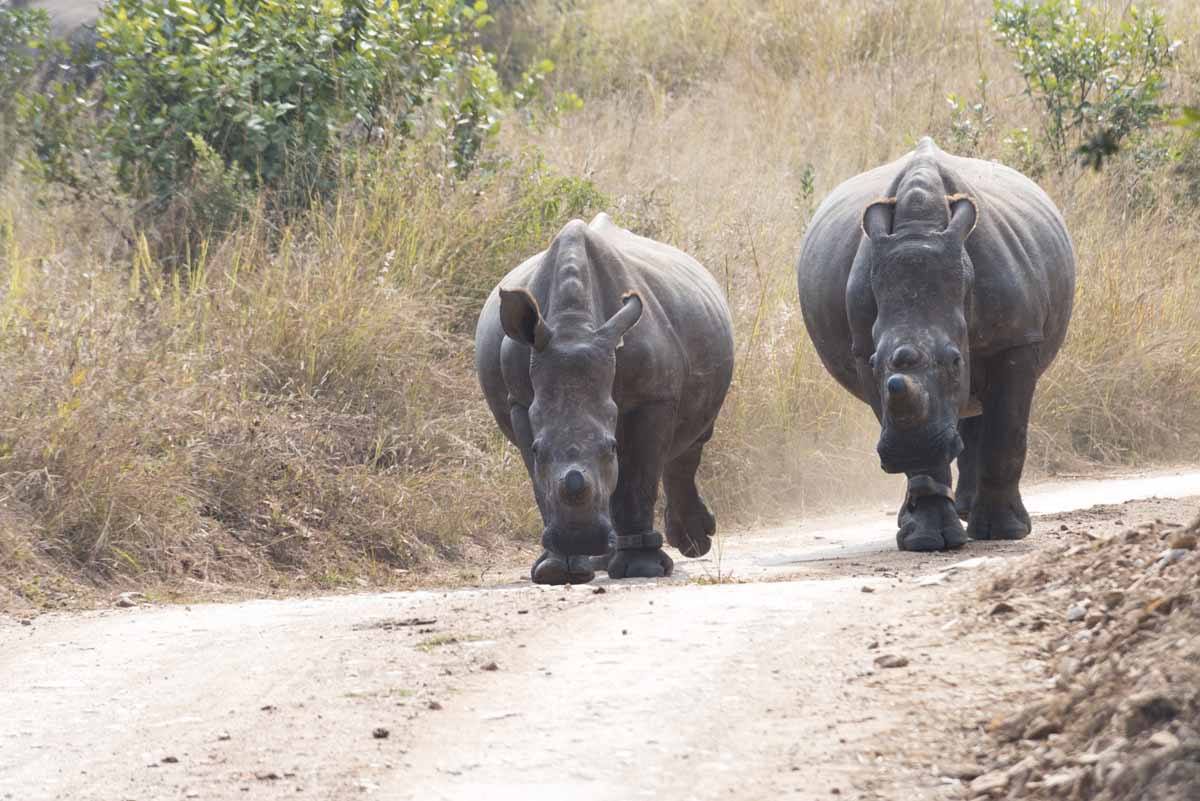
Poaching patrols have helped tremendously, but as the old saying goes, criminals are always one step ahead. Several rhinos have also been relocated from South Africa to other countries with better anti-poaching models, such as Botswana. However, with relocation costs of a single rhino close to $50,000, it is easy to do the maths and figure out that this approach can only save a limited number of individuals.
Currently, there are approximately 20,000 white rhinos left in the wild, 5000 black rhinos and only 3500 between the three species of Asian rhinos. With numbers of poached rhinos exceeding 1000 a year, the situation is indeed desperate – we need a silver bullet, something to end the poaching epidemics once and for all.
Legalising the trade of rhino horn has been suggested as a possible solution, advocated especially by rhino breeders (for obvious reasons, may I add). Rhino horns can be harvested, and pro-legalising arguments state that flooding the market with legally harvested horns will drive the price of horns down, hence reducing poaching. A recent court ruling in South Africa has legalised domestic trade of rhino horns – trade hasn’t yet started and nobody knows exactly when, or how, or even if it will begin.

However, an important points need to be made. The legal sale of rhino horns within South Africa could be used to launder poached horns, much like it was the case with blood diamonds. Moreover, traffickers currently sitting onto huge piles of poached horns may escape prosecution claiming that they were intended for ‘domestic use’. The question being currently debated is whether South Africa possesses the resources to enforce legal trade of rhino horns, while effectively keep fighting illegal trade.
[Related – Visit Stellenbosch & Enjoy the Good Life]
I, for one, don’t have an answer. Nor do I know whether a silver bullet to end poaching once and for all exists, or if rhinos will only exists in history books within a few generations. However, what I do know is if rhinos are to be saved, it will be because of the people fighting for their survival. People like Mark and Shannon Cherry from Care for Wild Africa, their team of volunteers, and the anti-poaching heroes we saw early that morning, hidden in the bush.
We would like to thank Discover Corps for having welcomed us on their tour.
Pin it for later?
